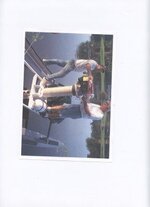macblastr
Jr. Member
anyone ever consider using a jetski setup to blow holes? you can buy older jetskis for $500 and they range from 50-80hp, they have everything you need to get the water moving & you could easily route the water with pvc. Just a thought.


 Sounds like a built in turbo to me Brad, I got 20 bucks that says we can spin the piston right out of it! Wonder how big a hole she would blow before she blew up.
Sounds like a built in turbo to me Brad, I got 20 bucks that says we can spin the piston right out of it! Wonder how big a hole she would blow before she blew up. 

